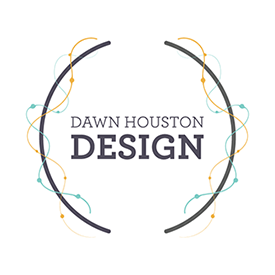When getting started as a designer, the world is an open door of possibilities. Even though I walked out the door of my school for the last time thinking I knew where I was headed, life had a way of throwing a tornado at my plans. My sense of direction ended up scattered all over town with me left to clean it up. Over the last couple of years I have found a sort of path to where I want to be, but I’ve learned plenty of important life lessons along the way.
Internships
School is a place to learn the skills you need, but the one thing missing from your brain is the experience needed to apply your knowledge to a business. You work with other designers, but, as an intern, you work with other departments, clients, managers and people who are not well versed in the art of design. That means you, the designer, get to learn how to explain design, work within their branding and handle their feedback. You are basically their tool to use whenever they need you and for whatever purpose. As an intern, you should still dictate what you want from your place of business. Are you willing to work for free? Who will you be working with? What sort of business/services do they offer their clients? All of these questions you should ask yourself.
Interning should be beneficial for you. A couple solid points for interning with a particular company include:
- Work with a company that goes in the direction you want. If your passion is for web design, look for internships that have a strong web portfolio. Do research on your perspective companies.
- Work with someone in your field. Nothing is worse than starting an internship and doing a job no one at your company can do. This is a learning experience, and, especially if you are not getting paid for it, there should be some benefit.
- Try to find a paid internship. School loans are no joke. If you can have an internship that pays what you would normally make at a any other part-time position, that could help you long-term when you are graduated and paying those same loans back. If you find one that isn’t, make sure the company is a strong candidate, and you can see yourself working there post-graduation.
Just remember, yes, you are working for them and trying to provide value to their company, but they should also do the same to you.
Post Graduation
Your first job post-graduation is to find a job in your field. When I was job hunting, I had a ton of different emotions running through my head. I had excitement at finally being done with school and to not have be a server in a restaurant anymore. I was doubtful at my ability and whether I was good enough to succeed. I was hopeful that my new income could take me places my old couldn’t. Finally, there was a very real fear of the looming student loan payments that were creeping up at the 6 month mark and of not ever finding a job.
These emotions led me to take the first job that seemed like a steady income and could be what I wanted out of a job. You’ll often find that your first job will not be last job. There is nothing wrong with that. A career should be more than making money; it should be a growing experience where you get to follow your passion. Stay only at a place that continuously challenges you and is in the direction that makes you happiest.
Student Loans
As a student, we live on the bare minimum getting buy with frozen dinners and value menu fast food. My classmates and I spent our funds on our projects: printing, test prints, some books, supplies, etc. Filling out those financial forms, I never realized how much money I would eventually owe to both federal and private loans. Looking back all those years of balancing school, minor hardships and work, understanding and working with my student loans so I could survive was the absolute hardest time I’ve ever had to deal with. Financial stress impacts you on all levels affecting your decision making skills. Keep in mind, though, that you have options.
- Deferment This should be your first option. Loans that are deferred will not accrue interest during this time period. You can usually defer if you are still in school or will be continuing your education elsewhere, if you are in the military or if you are unable to find full-time employment. Private loans are trickier so make sure to talk to them about your options.
- Forebearance This is a great way to postpone payments to get finances in order or to figure out your budget. I’ve used this method over the years to put money aside for car repairs and savings. You will, however, accrue interest during this time. You want to keep your interest rates low like between 3.5 and 4.5.
- School Resources Your school’s financial department should have resources post-graduation that you can contact for help. Through my school advisor, I was able to consolidate my loans and pick the best repayment option for me. If you have extra money to pay towards your loans, they advised me to pay towards the lowest amount first and also to the primary loan.
- Outside Resources There are a few outside resources that make your life a little easier. A couple links include:
- Studentloan.gov The site for Federal Loans also has information regarding your loans and a few repayment options that can lessen the burden
- Student Loan Borrower Assistance is another site that has information for students and graduates. They cover information regarding delinquent loans, private vs. federal and a list of resources.
- Student Loan Hero has an excellent blog and is free to use. I haven’t tried it myself, but if you find it useful, let me know.
Getting on your feet and started down your career path is never easy. Reach out, talk to others because you are not alone.






